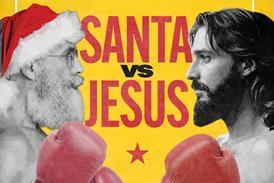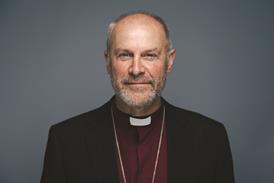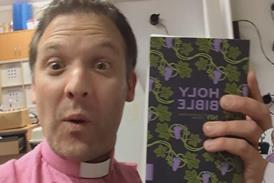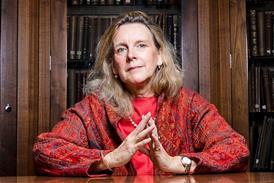Doctor Who at 60: The spiritual themes behind the sci-fi phenomenon
By  Caleb Woodbridge2023-10-24T12:36:00
Caleb Woodbridge2023-10-24T12:36:00

Caleb Woodbridge discovers a variety of spiritual messages in TV’s longest-running sci-fi show
On 22 November 1963, a new Saturday teatime “adventure in time and space” introduced a mysterious time-traveller known only as ‘the Doctor’ to TV audiences.
As the much-loved Doctor Who celebrates its 60th anniversary this month, David Tennant returns to the TARDIS, along with Catherine Tate as his companion, Donna. TV writer Russell T Davies is also back at the helm, having previously revived the show in 2005 to great acclaim. With Tennant pulling in old fans, and the announcement of Ncuti Gatwa as the next Doctor likely to attract new audiences – as well a co-production deal with Disney+ to boost the budget and reach global audiences – Davies has a good chance of pulling off another revival. But why is this very British sci-fi institution so enduringly popular?
Related articles
-
 Reviews
ReviewsOur forefathers used Christian theology to justify slavery. David Olusoga’s Empire is right to be critical
2025-12-10T12:41:00Z By Dr Daniel Johnson
David Olusoga’s three-part BBC series on the British empire has provoked widespread debate. UK Christians should honestly confront their past without trying to balance the scales, suggests Dr Daniel Johnson
-
 Opinion
OpinionIn public or online, women and girls should be safe from harm
2025-12-10T10:55:00Z By Judith Davey-Cole
Misogyny has moved from the margins into the mainstream, says Judith Davey-Cole. Christian communities have a crucial role to play in educating young people in the digital age
-
 Reviews
ReviewsWhat Celebrity Race Across the World taught me about the Christian life
2025-12-09T14:16:00Z By Emma Hide
As the third season of Celebrity Race Across the World draws to a close, Emma Hide says the show offers Christians some important lessons in doing life with Christ. The final destination is important, she says, but journeying with Jesus is what really changes us
More from Features
-
 Magazine Features
Magazine FeaturesSanta vs Jesus: When Claus meets the Christ
2025-11-28T11:20:00Z By Paul Kerensa
They’re often pitted against one another, but new research from Paul Kerensa has revealed it hasn’t always been this way. Can the Sleighman and the Saviour be friends after all?
-
![Jesus-myths-01-[Recovered]](https://d17xjl6rg4e8ic.cloudfront.net/Pictures/100x67/6/3/7/45637_jesusmyths01recovered_933246.jpg) Magazine Features
Magazine Features6 myths about Jesus debunked
2025-11-28T10:05:00Z By Jared Brock
Given it’s his birthday (kind of), it’s only fair we get to know the real Yehoshua ben Yehoseph. Jared Brock separates fact from fiction
-
 Magazine Features
Magazine FeaturesChurch is overwhelming for many. Here’s how to help
2025-11-28T03:29:00Z By AJ Gomez
Church should be a refuge – but for many, attending a Sunday service is tough. AJ Gomez investigates why some Christians find gathering together difficult, and what both leaders and individuals can do to help
- Issues
- Topics A-Z
- Writers A-Z
- © 2025 Premier Christianity
Site powered by Webvision Cloud


























